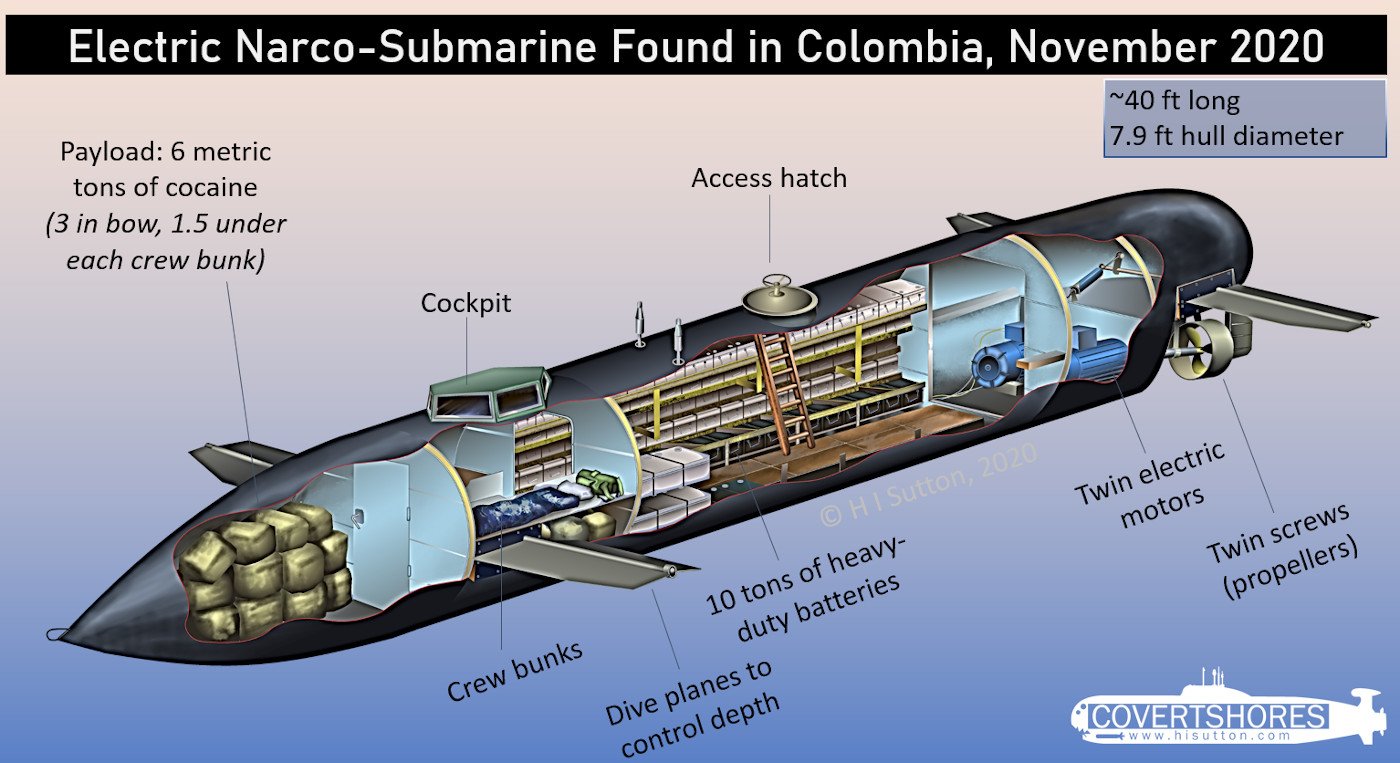Rare Electric Narco Submarine Seized in Colombia
Central and South American drug runners are continuing to create new specialized smuggling vessels to move narcotics into the U.S., as evidenced by a sophisticated electric submersible seized earlier this month.
On Nov. 5 the Colombian Navy, assisting by the U.S. Drug Enforcement Agency and local law enforcement agencies, raided an artisan boatyard near the Cucurrupí River in the Chocó area of Colombia. Under a makeshift roof they discovered a high-capacity narco submarine, the Colombian Navy announced on Twitter.
The submarine is estimated to have cost $1.5 million to construct, according to officials. Based on the plans that were seized by Colombian authorities, had it sailed, it would have carried some six metric tons of cocaine towards the American market, valued at around $120 million.
Put into perspective, most narco submarines interdicted by the U.S. Navy and Coast Guard carry around 1.6 metric tons of cocaine, worth approximately $30 to 35 million. The trend had been towards smaller payloads per trip, but the discovery of the new submarine points toward a trend reversal.
Another significant difference compared to other narco-submarines is that this seized vessel is fully submersible, at least for short periods of time. Virtually all narco submarines interdicted at sea have been more correctly termed low-profile vessels (LPVs). Also known as semi-submersibles, these are craft designed to run exceptionally low in the water to avoid detection. But they cannot fully submerge. This submarine’s cylindrical hull, sealed roof hatch and hydroplanes all point to some degree of submerged running.
Underwater it uses batteries to power two electric motors. Ten tons of batteries give it an estimated endurance of 12 hours, which would equate to about 32 nautical miles if the submerged speed is around three knots. Clearly, even if the cruising speed is higher, an electric submersible like this cannot make the entire trip unaided. A towing ring on the nose points to the answer: the craft is designed to be towed by a larger vessel until close to its destination. It would then make the final leg on its own. Once unloaded, it would be scuttled and join the hundreds of discarded narco subs which litter the seafloor.
The design is reminiscent of another rare electric narco submarine which was found in the same area in July 2017. That also had twin electric drive, four large hydroplanes and a tow ring. This suggests that the same master boat builder was behind it, or at least some common human thread.
Although this vessel’s design appears to have been active for at least three years, none have been interdicted at sea. This latest discovery by the Colombian Navy is a reminder that these sophisticated drug transports are still being built, inferring that spending more than $1 million is worth the effort for the traffickers. The engineer behind this latest vessel was arrested during the raids, but it’s unclear if his design will live on with a new engineer filling in his role.




Ingen kommentarer:
Legg inn en kommentar
Merk: Bare medlemmer av denne bloggen kan legge inn en kommentar.